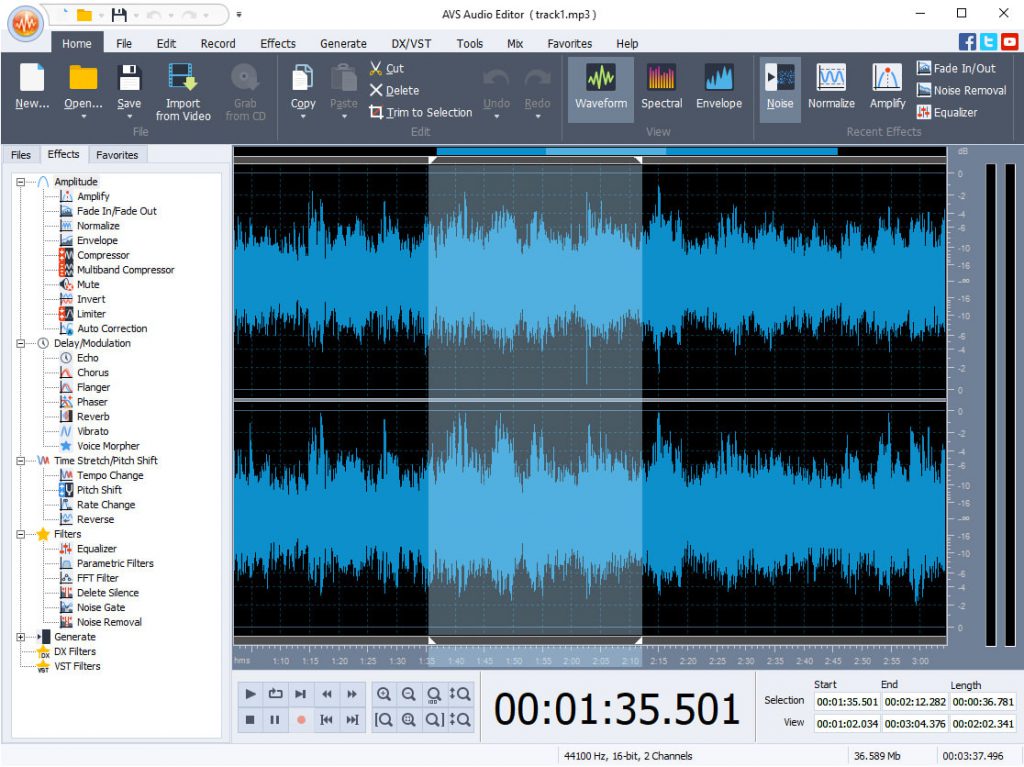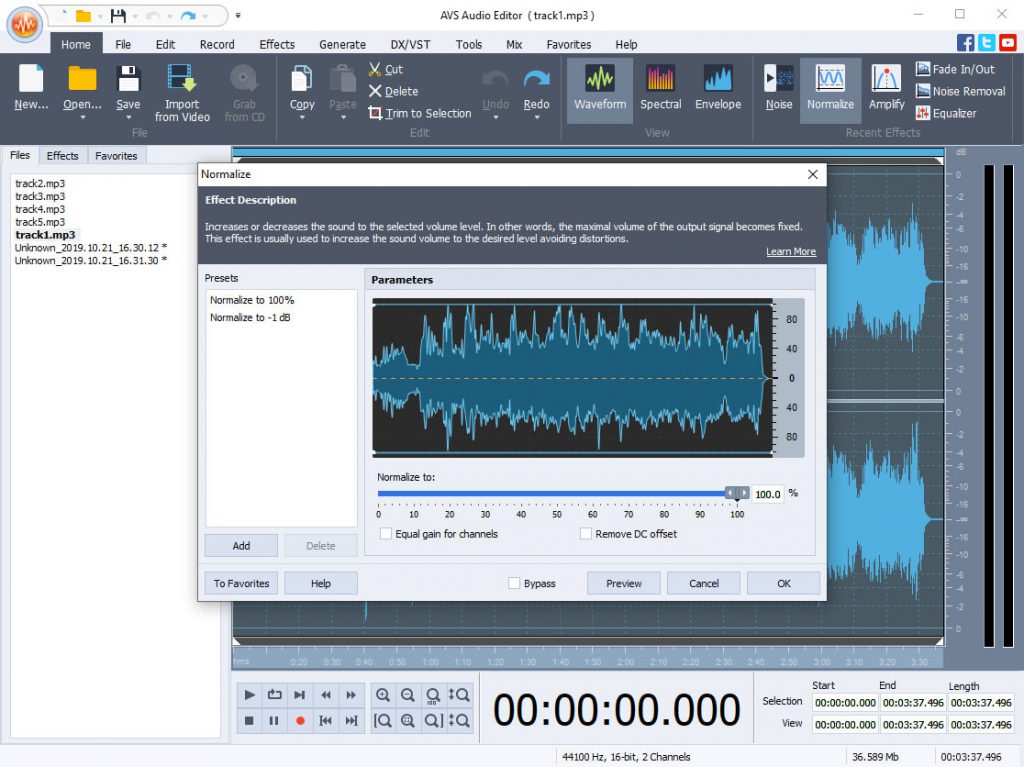
This article explains the sound energy without complicated physics formulas.
What is sound energy?
Sound energy is a product of any vibration. Whether speech, trembling guitar strings, or started car engine, any sound can be depicted as a wave using specialized software.
When you upload a song to AVS Audio Editor, the app represents it as a waveform:

Invisible to our eyes, this wave funnels into our ear canals each time we hear a song. In other words, instrumental music and voice were recorded with a microphone and turned into electricity.
The medium where a sound is produced, for example woods or a small room, acts as storage for kinetic and potential energy.
Kinetic energy is a sound itself whenever released.
Example: screaming.
Potential energy describes energy that a sound possesses because of the location where it is produced.
Example: in a small room, your scream will be much louder than in the woods. The potential energy of your scream in a small room is higher.
Sound energy examples
Because sound energy emerges with literally everything that can produce sounds, real-life examples are countless.
At home
Open the tap on the kitchen and hear the water going down.

Now try to fill a glass with water. Sounds different, right?
Here are some other common examples:
- Opening door
- Cat purring..or dog barking
- Vacuum cleaner
- Clock
- Air conditioner
- Shuffling feet
- Cell phone vibration
- Pencil writing
- Mouse clicks
In the nature
One of the best examples here is sea waves. Remember that gentle sea whispering and then a louder splashing the shore?

But nature is full of other familiar sounds, including:
- Rustle of autumn leaves
- Blowing wind
- Rain
- Thunder
- Waterfall
- Birds in the morning
- Snow crunching
From humans
The best example is coughing, which is obviously produced by a vibration.

Among other sounds that people produce intentionally or accidentially are:
- Singing
- Laughing
- Screaming
- Whistling
- Sneezing
- Hiccuping
- Snapping fingers
How do we use sound energy?
There are many ways people can use sounds to make their life safe and comfortable. Let’s look at some examples.
- Vehicle or train horns — they prevent numerous accidents.

- Alarm clock
- Alerts
- Medical ultrasound
- Music
In specialized software like AVS Audio Editor there are many features for slicing ringtones, recording audiobooks, mixing music tracks.
Annoying examples of sound energy
Not every sound is good for hearing. Some of them cause discomfort and even can be dangerous for health.
- Drill is definitely among the most unpleasant noises for a human ear.

- Industrial noise
- Vynil scratching
- Hissing in audio recordings
Such audio defects can be easily fixed in multimedia editors, such as AVS Audio Editor.
Some examples can be used for music or movie production. There are many libraries over the web with such royalty-free audio files, for example on Clipchamp.
Managing sound energy in AVS Audio Editor
In AVS Audio Editor, you can edit songs and recordings, as well as their parameters:
- Cut, trim, split, and merge audio files
- Remove noise, crackling, and hissing
- Improve audio quality
- Regulate volume levels and normalize audio
- Apply 20+ ready-to-use effects to make recordings sound differently

Get AVS Audio Editor today and discover all included features.
The entire AVS4YOU multimedia suite is currently available with large discounts. Save 70% today!
Apple users might consider an audio editor for Mac.